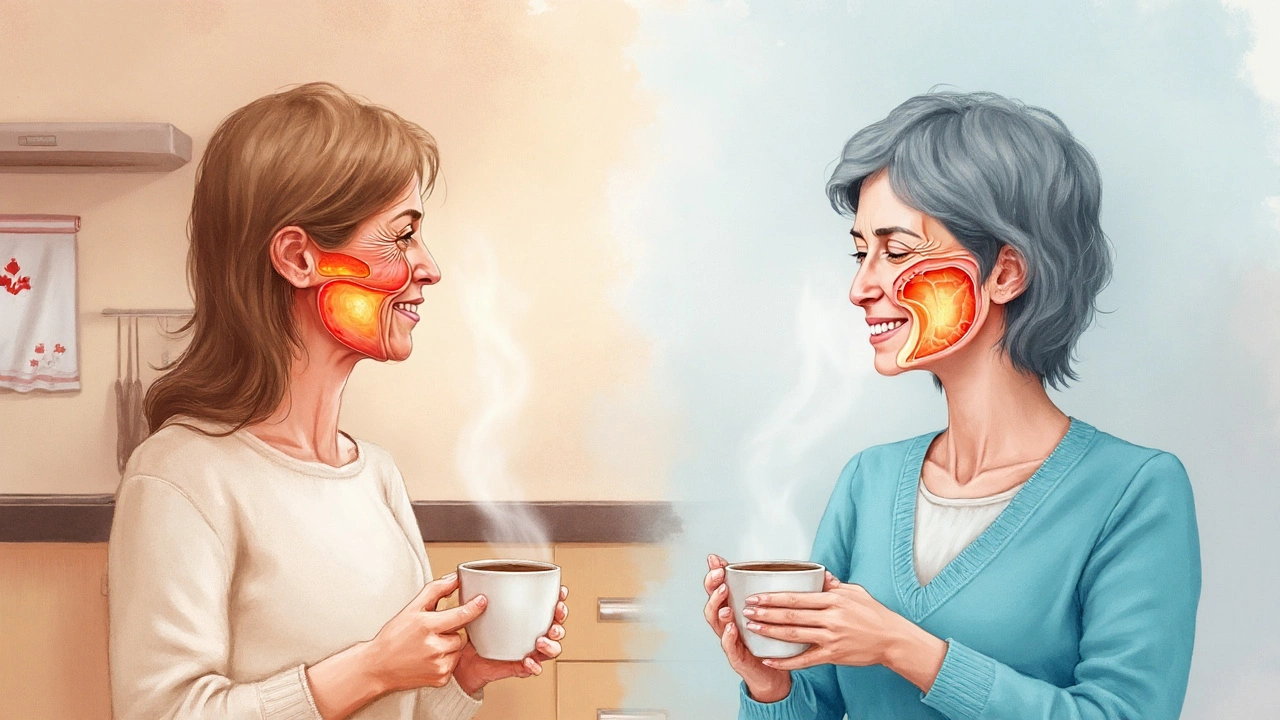Ear Canal Infection: What It Is, How It Feels, and What to Do
If you’ve ever felt a burning itch or sharp pain inside your ear after swimming or using cotton swabs, you’ve probably experienced an ear canal infection, also called otitis externa. It’s not just a minor annoyance – the ear canal is a delicate tunnel, and when it gets inflamed, the discomfort can spill over into your day.
What Triggers an Ear Canal Infection?
Most infections start when water, bacteria, or fungi get trapped in the ear. Swimmers often call it “swimmer’s ear” because prolonged exposure to damp conditions creates a perfect breeding ground. Using ear buds, earbuds, or cleaning tools can also scrape the delicate skin, letting germs sneak in. Skin conditions like eczema or psoriasis make the canal more vulnerable, and even cheap hearing aids that don’t fit well can cause irritation.
Spotting the Symptoms Early
Typical signs show up quickly: an itchy feeling, a feeling of fullness, and pain that worsens when you pull on your earlobe or chew. The pain can be sharp, like an electric shock, especially when you touch the outer ear. Redness or swelling around the ear canal is common, and in some cases you might see a thin discharge that looks watery or pus‑like. Fever isn’t usual, but if you notice it, that could mean the infection is spreading.
When the pain is mild, you can often manage it at home, but if you start to lose hearing, notice a foul smell, or the pain gets worse after a day or two, it’s time to get professional help.
Simple Home Care Steps
First, keep the ear dry. Use a soft towel to gently pat the outside after showering and avoid inserting anything into the canal. Over‑the‑counter pain relievers such as ibuprofen can calm the ache. A few drops of a diluted alcohol‑vinegar solution (½ % acetic acid) can help dry out excess moisture, but only use it if your eardrum is intact – a doctor can confirm that.
If swelling is noticeable, a cool compress applied for a few minutes can reduce inflammation. Avoid using Q‑tips; they push wax deeper and can aggravate the infection. Instead, let the ear clean itself or ask a professional for safe removal.
When to See a Doctor
Medical treatment typically involves prescription drops that contain antibiotics, steroids, or antifungal agents, depending on the cause. The doctor will also check that your eardrum isn’t perforated, because certain drops can cause damage if it’s already torn.
In rare cases, the infection can spread to nearby bone (osteomyelitis) or cause a serious abscess. If you experience intense swelling, fever, dizziness, or facial weakness, seek care immediately.
Preventing Future Infections
To keep your ears happy, dry them thoroughly after swimming – a hair dryer on low, held several inches away, works well. If you love water sports, consider ear plugs designed for swimmers. Limit the use of earbuds and headphones, and give your ears a break every few hours.
Regularly clean the outer ear with a washcloth, but never insert objects deep into the canal. People with eczema should keep the skin moisturized with a gentle, fragrance‑free cream to reduce cracking.
By staying aware of the why and how, you can stop a simple irritation from turning into a painful infection. Listen to your ears, act quickly, and you’ll keep that annoying ache at bay.
How Ear Canal Infections Trigger Sinus Problems - Causes, Symptoms & Relief
Explore how ear canal infections are linked to sinus problems, why they happen, shared symptoms, and practical steps to prevent and treat both conditions.
